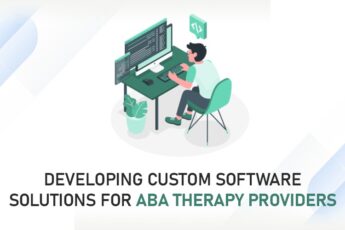Introduction
In the ever-changing healthcare landscape, where effective communication and teamwork are crucial, Clinical Communication & Collaboration Software (CCCS) plays a vital role. CCCS is a sophisticated suite of digital tools. It is designed to facilitate effective communication and collaboration among healthcare practitioners and clinical teams. It serves as a central hub that connects doctors, nurses, specialists, administrators, and other healthcare professionals, ensuring that critical information is exchanged swiftly and accurately.
CCCS solutions offer a range of features and functionalities, including secure messaging, voice and video calling, task management, file sharing, and integration with electronic health records (EHR) systems. These tools are essential in enhancing care coordination, reducing medical errors, and ultimately improving patient outcomes.
For all healthcare providers, this blog explores the transformative potential of CCCS. Through CCCS technology, healthcare businesses can streamline operations, provide more efficient care, and enhance the patient experience. In the following sections, we’ll delve into the precise value propositions CCCS offers to healthcare organizations and the broader healthcare ecosystem.
Understanding the Landscape
Understanding the landscape of Clinical Communication & Collaboration Software (CCCS) within the healthcare industry is essential for both providers and businesses. In recent years, CCCS has emerged as a critical solution to address the communication challenges that have long plagued the healthcare sector. Traditional healthcare communication relied on inefficient methods like pagers, phone calls, and handwritten notes, leading to delays, miscommunication, and potential errors. CCCS platforms revolutionize this landscape with secure, real-time messaging, connecting professionals across departments and locations. This shift enhances communication efficiency, accuracy, and fosters more patient-centric care coordination.
Additionally, CCCS has evolved to offer a wide array of solutions suited to different healthcare settings. Initially embraced by larger hospitals and healthcare systems, this technology has now become widespread throughout the entire healthcare landscape. Smaller medical practices, specialty clinics, home healthcare providers, mental health professionals and wellness centers have recognized the value of CCCS. It helps in improving operational workflows and delivering higher quality care. As a result, the market for CCCS has become highly competitive, with numerous vendors offering specialized solutions that cater to the unique needs of different healthcare niches. This diversity in CCCS offerings has allowed healthcare organizations to choose solutions that align with their specific requirements and adapt to their existing IT infrastructure. It is contributing to the widespread adoption and continued growth of CCCS within the healthcare industry.
The Value Proposition of Clinical Communication & Collaboration Software
- Streamlined Communication: Imagine a healthcare environment where professionals from various specialties collaborate seamlessly to enhance patient care. For example, CCCS enables real-time communication among these professionals, ensuring effective coordination to improve the patient’s experience.
- Improved Patient Engagement: For healthcare providers, patient engagement is essential. CCCS can enable secure communication between healthcare teams and patients, enhancing their ability to manage conditions effectively. For example, features like appointment reminders, medication schedules, and dietary advice can all be seamlessly integrated into your CCCS, ultimately boosting patient engagement
- Enhanced Data Management: In the healthcare industry, managing significant volumes of health data is common. CCCS aids businesses like yours in efficiently handling and securely sharing data among your team, all while adhering to stringent data security standards. For instance, if you operate a healthcare facility, CCCS simplifies the process of collecting and sharing patient health records among your staff, guaranteeing confidentiality and protection..
- Customization for Specialties: CCCS can be meticulously customized to align with the distinct requirements of your business. Whether you’re focused on remote monitoring or other healthcare services, CCCS can be tailored to cater to your unique needs. For example, we can seamlessly integrate specialized tracking tools, empowering you to collect and analyze data, facilitating precise measurement of progress.
Challenges to Address
While the potential benefits are significant, creating CCCS solutions for businesses in healthcare niches requires addressing certain challenges:
- Regulatory Compliance: Healthcare is heavily regulated, and CCCS must adhere to industry standards like HIPAA. Your software should prioritize data security and patient privacy. Example: Imagine a CCCS platform used in a hospital that fails to implement robust encryption protocols for patient data. This could result in data breaches, potentially leading to legal consequences and damage to the hospital’s reputation.
- Integration with Existing Systems: Many healthcare businesses already use Electronic Health Record (EHR) systems. Your CCCS should seamlessly integrate with these systems to ensure a smooth workflow. Example: A specialty clinic utilizes a CCCS that cannot effectively integrate with its EHR system. As a result, healthcare providers must manually input patient information into both systems. Otherwise it can lead to inefficiencies, increased risk of errors, and frustration among staff.
- User Experience: The success of Clinical Communication & Collaboration Software largely depends on user adoption. Ensuring an intuitive and user-friendly interface is crucial to encourage healthcare professionals to embrace the technology. Example: A CCCS platform in a large hospital is clunky, difficult to navigate, and lacks a mobile app for on-the-go healthcare professionals. As a result, doctors and nurses are less inclined to use it, preferring traditional communication methods.
- Interoperability: In a diverse healthcare ecosystem, interoperability is key. So, Your CCCS should be able to exchange data with other systems, ensuring that information flows seamlessly across the continuum of care. Example: An outpatient surgery center adopts a CCCS that does not support interoperability with the local diagnostic laboratory’s systems. This leads to delays in test result delivery, making it challenging for surgeons to provide timely care to their patients.
Building a Clinical Communication & Collaboration Software for Your Business
Till now we’ve explored the potential benefits and challenges. Now let’s discuss how you can go about building a CCCS tailored to your wellness center or specialty hospital:
- Define Your Objectives: Start by clearly defining the objectives and goals you want to achieve with your CCCS. What specific pain points do you want to address? Envision how your solution will improve business operations and patient care.
- Regulatory Compliance: Given the stringent regulations in healthcare, it’s crucial to ensure that your CCCS complies with all relevant standards. Collaborate closely with legal and compliance experts to ensure the protection of patient data and adherence to laws like HIPAA in your software development.
- Integration: Consider the existing systems in your business, such as EHRs, appointment scheduling software, and telemedicine platforms. Your CCCS should seamlessly integrate with these systems to create a cohesive healthcare ecosystem.
- User-Centered Design: Prioritize user experience (UX) and user interface (UI) design. Your CCCS should be intuitive and easy to use, as this will encourage healthcare professionals to adopt it as a part of their daily workflow.
- Interoperability: Design your CCCS with interoperability in mind. Ensure that it can exchange data with other systems, allowing for a seamless flow of information within the healthcare ecosystem.
- Security and Privacy: Invest in robust security measures to protect patient data. Encryption, access controls, and regular security audits are essential components of a secure CCCS.
- Scalability: Plan for scalability from the outset. As your business grows, your CCCS should be able to accommodate an increasing number of users and data.
- User Training and Support: Offer comprehensive training and support to healthcare professionals using your CCCS. Therefore, A well-trained user base is more likely to maximize the benefits of the software.

Conclusion
Clinical Communication & Collaboration Software holds immense potential for businesses in healthcare niches like wellness centers and specialty hospitals. So, By developing CCCS solutions that address the unique needs of these businesses, you can not only streamline their operations but also enhance the quality of care they provide to patients.
As you embark on this journey, keep in mind that the success of Clinical Communication & Collaboration Software lies in its ability to bridge the gap between technology and healthcare. It is a catalyst that has the potential to transform the delivery of specialized healthcare services. Ultimately, CCCS can significantly contribute to better patient outcomes, especially in the ever-evolving and ripe-for-innovation healthcare industry.
In conclusion, clinical communication and collaboration software are essential for improving patient outcomes. DIBS team can help develop these software platforms that enhance coordination, improve patient safety, increase efficiency, and enable better patient engagement. As healthcare continues to evolve, clinical communication and collaboration software will play an increasingly critical role in providing quality patient care.
Talk to our experts and find out more about the latest healthcare technologies and how DIBS team can enable seamless communication among healthcare teams, reducing medical errors and improving patient care coordination.







Leave a Comment